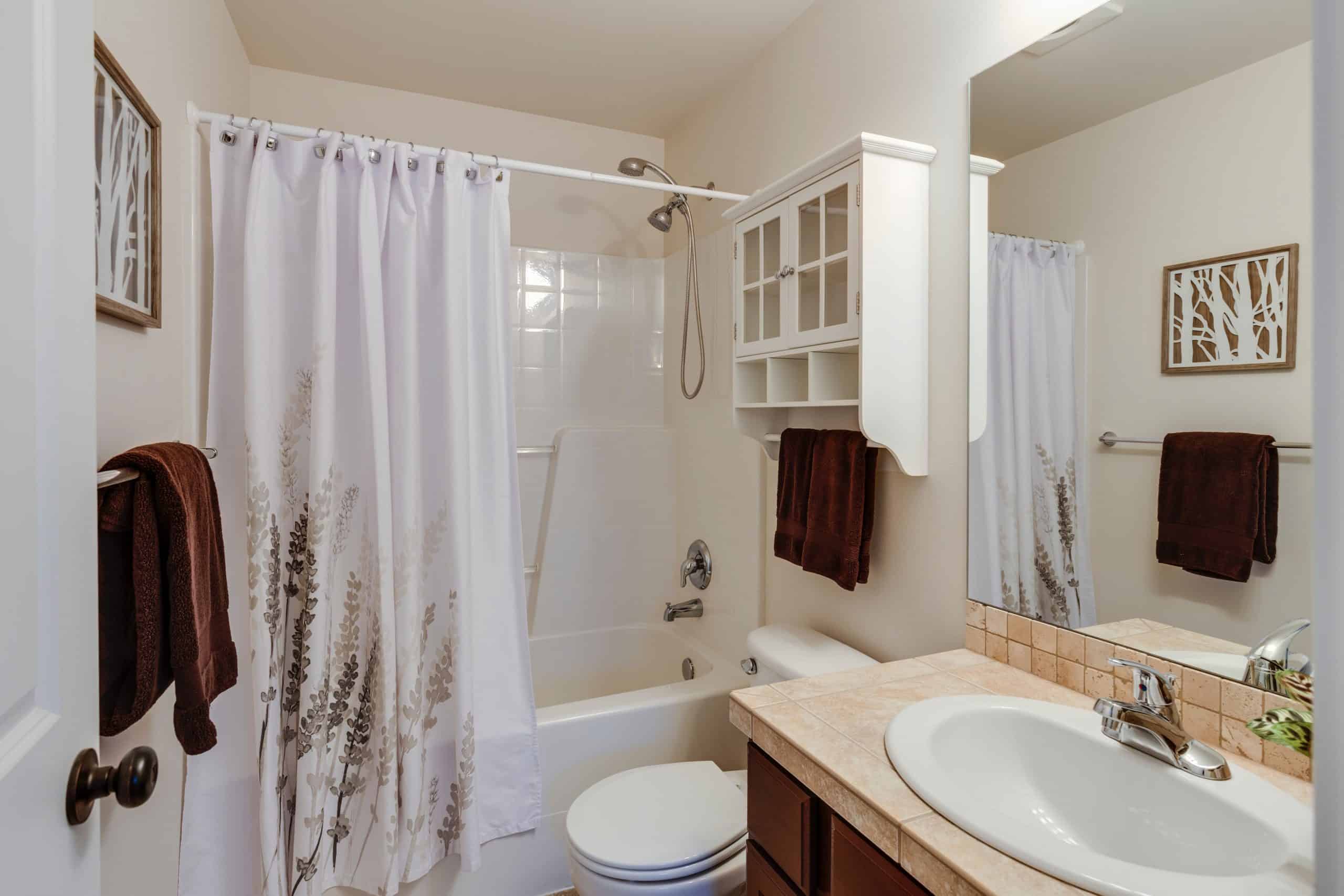If you want to enhance safety in and around the home, keep it simple, streamlined, and well-ordered. Make sure that there is ample access in and out of the dwelling, which will aid in emergency situations, prevent accidents, and reduce falls, too. These are benchmarks of National Safe-at-Home Week in August.
Part of staying safe at home involves accessibility and convenience how safe is your home environment? Observe and honor National Safe-at-Home Week in August to simplify and troubleshoot your living situation to determine if it is well-ordered and as safe as it can be.
Some things to consider include the following tips:
Accessibility
It is important to provide access for emergency personnel, as needed, as well as accessibility within the home environment for those living there. For this reason, decluttering and streamlining belongings around the space can be key. Create a wide berth through the home, allowing extra room around fixtures, toilets, sinks, appliances, etc. for ease and access.
Furthermore, simplifying your surroundings can make it a lot less laborious to keep clean and tidy. If you use mobility aids like wheelchairs or walkers, reducing objects and items from the living space can make navigating these devices easier. If you live on two levels, maybe it makes sense to consolidate to first-floor living; if you have steps or risers around the entry to the home, modify them with a portable or permanent ramp.
Consider how to enhance accessibility throughout the living environment in your quest to create order and function at home.
Clutter
Clutter contributes to the incidence of falls and subsequent injuries. Removing clutter may reduce tripping hazards; did you know that one in four American adults over age 65 fall each year, resulting in around 36 million incidents annually? It’s true, and in fact, approximately 32,000 of these falls are fatal, creating a serious public health issue.
What can you do to reduce the event of such catastrophes? Clear the clutter and keep things orderly. In addition to relating to accessibility, as previously mentioned, an orderly home is a lot easier to maintain and keep up with, key for seniors that want to remain autonomous and age in place.
Stress and Strain
An organized and orderly home environment is less stressful and requires less effort and strain than an untidy, crowded, or disorganized living situation. Over time, stress and anxiety surrounding your living situation can take a toll; enjoy a healthy home. Don’t let disorder or disorganization compromise your quality of life.
Many older people aim to live life autonomously and to stay in their own home as long as they can do so. This is referred to as ‘aging in place’ and it can be a comforting prospect to those with physical issues, disabilities, or mobility challenges. Create a less stressful environment by making sure that it is accessible and tidy even if that means purging the home of items that you don’t need or that could cause you to fall.
Did you know that it is easier to maintain an orderly home? That means, less sweat equity on your part! Talk to loved ones about taking items, keepsakes, or heirlooms to enjoy now, so you can get them out of your way and start living a better life.
Lighting
There are a few prevalent causes of falls in the home, and one of the primary ones is poor lighting. Make sure that your home is well illuminated; light it up! If you are considering investing in new fixtures or bulbs, go with LED. The reasons that make LED the clear choice include these:
- LED lasts longer, which means you won’t have to change the bulbs as often.
- LED can save money over time in bulb replacement costs.
- LED is cooler to the touch, so there is less chance of getting burned by a hot bulb.
- LED provides better, brighter light than other options, like incandescent or fluorescent.
Whether you make the switch to LED or not, make sure that you illuminate the areas of the home that could make you susceptible to falls, like these:
- Near stairs, steps, or thresholds.
- Near toilets and sinks.
- Doorways, entries, and exits.
- In halls, or other places that you may traverse after dark.
The initial investment into LED may cost you a few bucks, but you will quickly recoup this expense with savings in bulbs, maintenance, and convenience. Plus, you won’t believe how much better the overall illumination is, providing a much better view of your surroundings. Lighting up the home is a great step toward creating a more orderly living environment that is free from potential hazards and dangers.
Maintain a safe and well-ordered home with quality mobility aids from Pacific Mobility. From grab bars and shower seats to stairlifts and ramps, we have got you covered. Call or visit today!
President, Husband, Father, Grandfather Graduate of UC Davis- Bio Sci Major- Go Aggies! Jeff has extensive experience in all of Pacific Mobility’s products and services, and specializes in accessibility products as well as stairlifts, ceiling lifts and custom wheel chairs. His hobbies include spending time with family, gardening, mountain biking, exercising and off road motorcycle riding.
24 years as Owner/President of Pacific Mobility Center – selling, installing, and servicing stairlifts, porch lifts, ceiling lifts, pool lifts, handicap ramping, specialty wheelchairs, scooters, power wheel chairs, and other power mobility devices
Certified Environmental Access Consultant since 2008
Licensed General Contractor since 1998
Certified Aging in Place Specialist since 2016
Board Member for Home Access Professionals
Member of Association of Members of the Accessibility Equipment Industry (AEMA)




